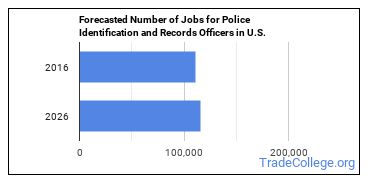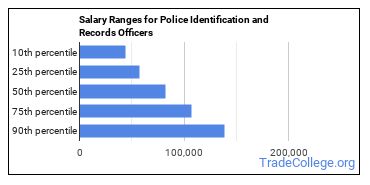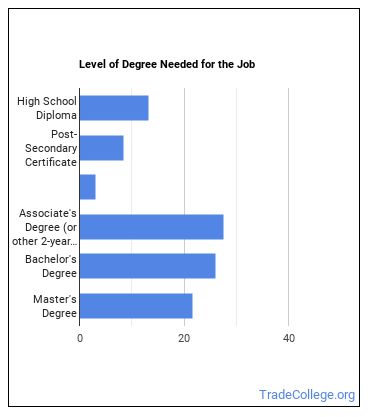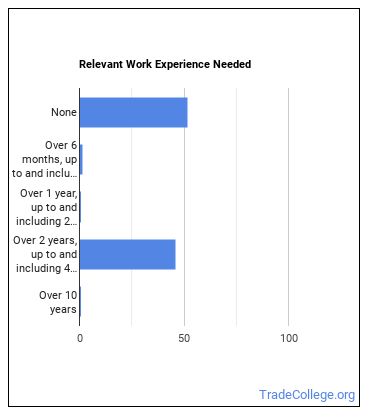Find Trade Colleges
What You Need to Know About Police Identification and Records Officer
Example of Police Identification & Records Officer Job Collect evidence at crime scene, classify and identify fingerprints, and photograph evidence for use in criminal and civil cases.
List of Police Identification & Records Officer Job Duties
- Package, store and retrieve evidence.
- Coordinate or conduct instructional classes or in-services, such as citizen police academy classes and crime scene training for other officers.
- Process film and prints from crime or accident scenes.
- Perform emergency work during off-hours.
- Photograph crime or accident scenes for evidence records.
- Identify, compare, classify, and file fingerprints, using systems such as Automated Fingerprint Identification System (AFIS) or the Henry Classification System.
Featured schools near , edit
Things a Police Identification & Records Officer Should Know How to Do
When polled, Police Identification and Records Officers say the following skills are most frequently used in their jobs:
Active Listening: Giving full attention to what other people are saying, taking time to understand the points being made, asking questions as appropriate, and not interrupting at inappropriate times.
Critical Thinking: Using logic and reasoning to identify the strengths and weaknesses of alternative solutions, conclusions or approaches to problems.
Speaking: Talking to others to convey information effectively.
Reading Comprehension: Understanding written sentences and paragraphs in work related documents.
Writing: Communicating effectively in writing as appropriate for the needs of the audience.
Complex Problem Solving: Identifying complex problems and reviewing related information to develop and evaluate options and implement solutions.
Related Job Titles
- Criminalist
- Crime Victim Specialist
- Site Identification Specialist
- Accident Reconstructionist
- Community Service Officer
Police Identification & Records Officer Employment Estimates
There were about 110,900 jobs for Police Identification and Records Officer in 2016 (in the United States). New jobs are being produced at a rate of 4.5% which is below the national average. The Bureau of Labor Statistics predicts 5,000 new jobs for Police Identification and Records Officer by 2026. Due to new job openings and attrition, there will be an average of 7,500 job openings in this field each year.

The states with the most job growth for Police Identification & Records Officer are Nevada, Utah, and Arkansas. Watch out if you plan on working in New Jersey, Maryland, or Wyoming. These states have the worst job growth for this type of profession.
Police Identification & Records Officer Salary
The average yearly salary of a Police Identification & Records Officer ranges between $43,800 and $138,860.

Police Identification and Records Officers who work in District of Columbia, Alaska, or Hawaii, make the highest salaries.
How much do Police Identification and Records Officers make in each U.S. state?
| State | Annual Mean Salary |
|---|---|
| Alabama | $64,750 |
| Alaska | $118,360 |
| Arizona | $81,810 |
| Arkansas | $60,340 |
| California | $107,120 |
| Colorado | $87,280 |
| Connecticut | $90,470 |
| Delaware | $89,930 |
| District of Columbia | $122,460 |
| Florida | $76,560 |
| Georgia | $66,430 |
| Hawaii | $107,010 |
| Idaho | $73,510 |
| Illinois | $87,470 |
| Indiana | $75,150 |
| Iowa | $73,320 |
| Kansas | $62,260 |
| Kentucky | $71,300 |
| Louisiana | $65,090 |
| Maine | $70,620 |
| Maryland | $102,370 |
| Massachusetts | $101,800 |
| Michigan | $86,580 |
| Minnesota | $76,640 |
| Mississippi | $64,150 |
| Missouri | $70,860 |
| Montana | $81,210 |
| Nebraska | $73,480 |
| Nevada | $87,680 |
| New Hampshire | $80,370 |
| New Jersey | $102,600 |
| New Mexico | $77,890 |
| New York | $91,250 |
| North Carolina | $60,810 |
| North Dakota | $84,340 |
| Ohio | $75,310 |
| Oklahoma | $66,130 |
| Oregon | $93,840 |
| Pennsylvania | $85,730 |
| Rhode Island | $86,580 |
| South Carolina | $60,420 |
| South Dakota | $72,050 |
| Tennessee | $71,940 |
| Texas | $79,950 |
| Utah | $80,840 |
| Vermont | $83,060 |
| Virginia | $98,850 |
| Washington | $85,440 |
| West Virginia | $86,340 |
| Wisconsin | $76,590 |
| Wyoming | $81,750 |
What Tools & Technology do Police Identification and Records Officers Use?
Below is a list of the types of tools and technologies that Police Identification and Records Officers may use on a daily basis:
- Microsoft Excel
- Microsoft Word
- Microsoft Office
- Web browser software
- Microsoft Visio
- Adobe Systems Adobe Photoshop
- Database software
- National Crime Information Center NCIC database
- Integrated Automated Fingerprint Identification System IAFIS
- National Integrated Ballistics Information Network NIBIN
- SmartDraw.com SmartDraw Legal
- DesignWare 3D EyeWitness
- The CAD Zone The Crime Zone
- Computer aided composite drawing software
- Trancite Logic Systems ScenePD
- DataWorks Plus Digital CrimeScene
- Image enhancement software
- Eos Systems PhotoModeler
- Visual Statement Vista FX3 CSI
- DeChant Consulting Services iWitness
Becoming a Police Identification & Records Officer
What kind of Police Identification and Records Officer requirements are there?

How Long Does it Take to Become a Police Identification & Records Officer?

Related Careers
Those interested in being a Police Identification and Records Officer may also be interested in:
Those who work as a Police Identification and Records Officer sometimes switch careers to one of these choices:
References:
More about our data sources and methodologies.
